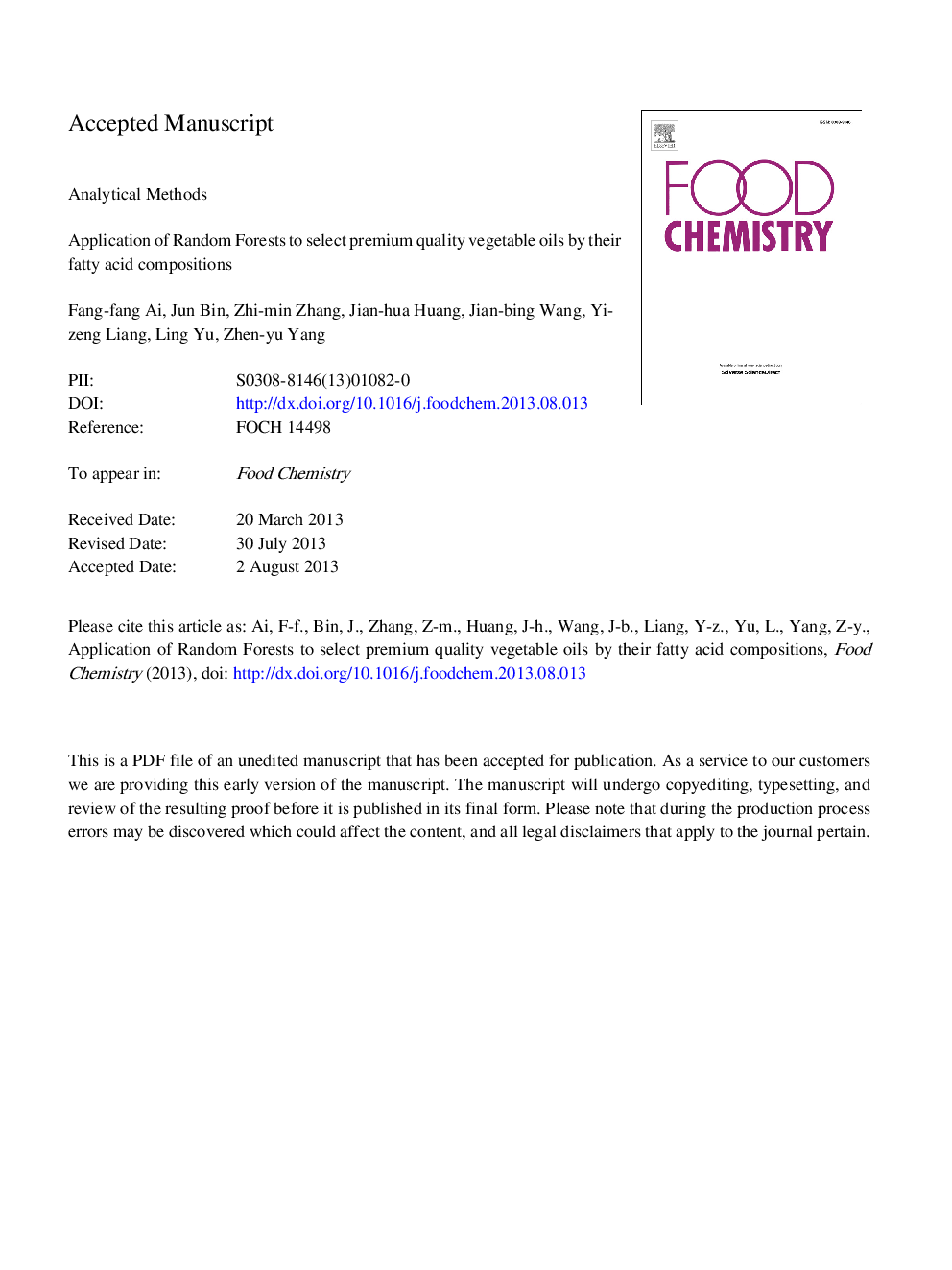| Article ID | Journal | Published Year | Pages | File Type |
|---|---|---|---|---|
| 7601213 | Food Chemistry | 2014 | 25 Pages |
Abstract
In order to discriminate premium quality from inexpensive edible oils, the fatty acid profiles of tea, rapeseed, corn, sunflower and sesame oil were compared with the ones from extra virgin olive oil (EVOO). Fatty acid methyl esters were quantified by GC/MS. Principal component analysis (PCA) and random forests (RF) were applied to cluster the samples. RF showed a better ability of discrimination and also revealed the contribution of each variable to the clustering model. The multidimensional scaling (MDS) plot of the RF proximity matrix demonstrated that tea oil was similar to EVOO. Meanwhile, it was observed that the total content of cis-monounsaturated fatty acids (79.48%) in tea oil was close to EVOO (80.71%), especially the oleic acid (77.38% and 77.45%, respectively). The results suggest that tea oil might be a good edible oil choice, considering the high oleic acid content and similar fatty acid profiles compared to those of EVOO.
Related Topics
Physical Sciences and Engineering
Chemistry
Analytical Chemistry
Authors
Fang-fang Ai, Jun Bin, Zhi-min Zhang, Jian-hua Huang, Jian-bing Wang, Yi-zeng Liang, Ling Yu, Zhen-yu Yang,
